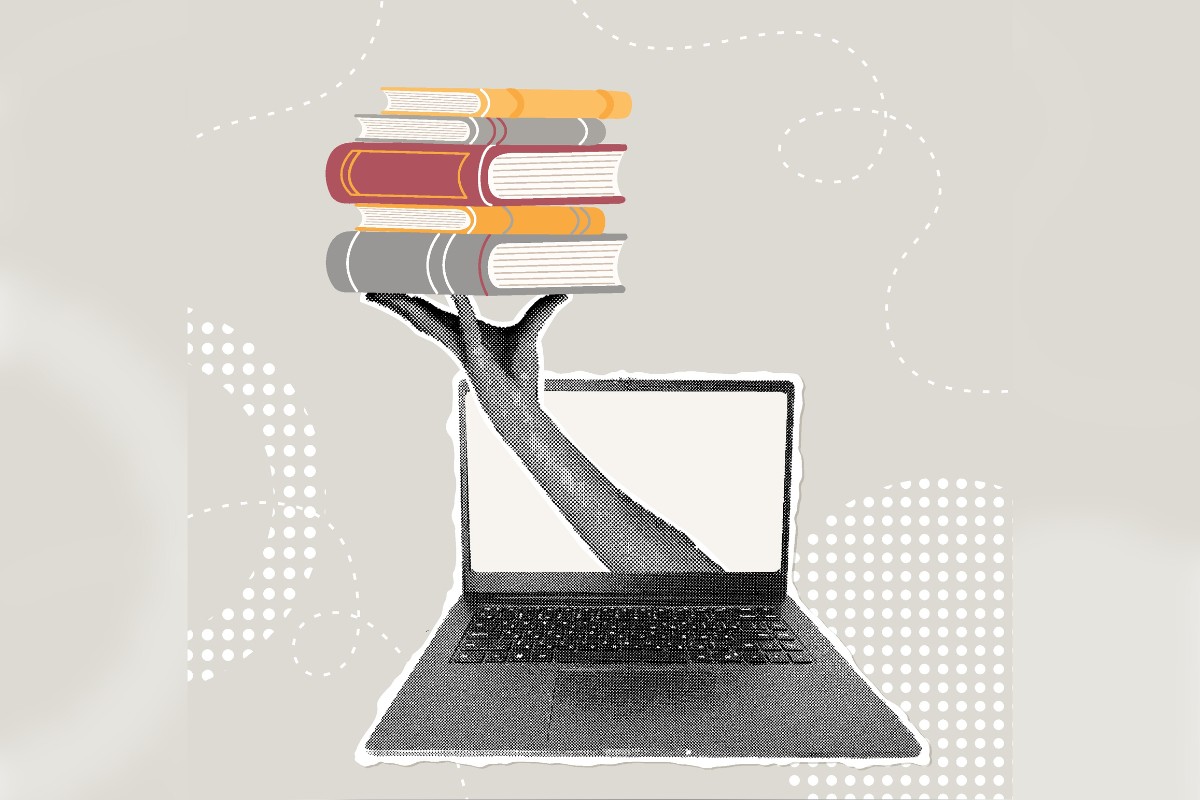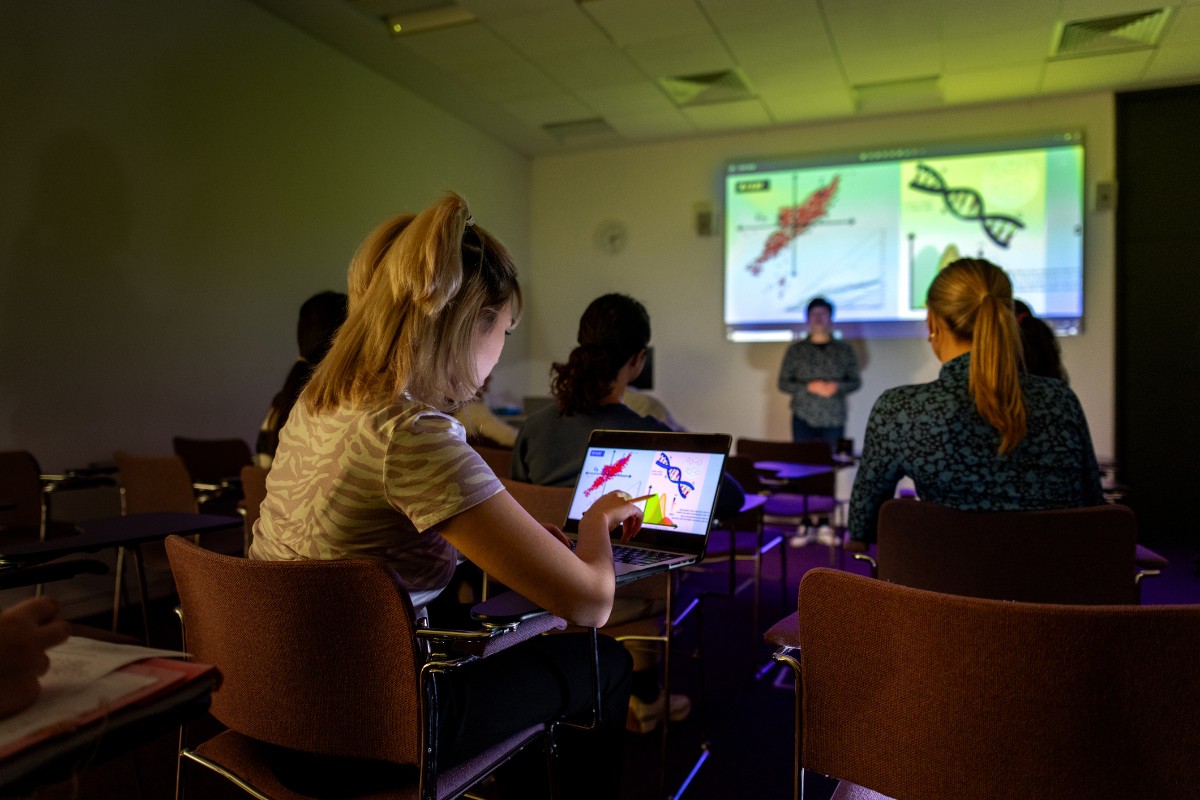
Teaching AI Literacy Across the Curriculum by TC’s Irina Lyublinskaya and Xiaoxue Du (Ed.D. ’22). (Photo courtesy of Corwin Press)
As the world becomes increasingly technology-driven with artificial intelligence (AI) leading the way, equipping students with AI literacy skills is essential. A report from the World Economic Forum (WEF) predicts that AI will create 170 million new roles over the next decade. This shift underscores the need for students to grasp AI's role in the job market, preparing them for a future where AI literacy is crucial for career success. Beyond conventional teaching methods, educators are tasked with helping students grasp the intricacies of AI—its functionality, potential applications and even inherent limitations.
In their new book, Teaching AI Literacy Across the Curriculum, TC alumna Xiaoxue Du (Ed.D. ’22) and Irina Lyublinskaya, Professor of Mathematics & Education, delve into the importance of AI literacy, providing educators with insights into the complexities of artificial intelligence while offering practical strategies for seamlessly integrating AI into a multidisciplinary curriculum.

Pictured: Irina Lyublinskaya, Professor of Mathematics & Education (left) and Xiaoxue Du (Ed.D. ’22) (right).
“AI literacy has the potential to spark curiosity, boost critical thinking, and foster a love of lifelong learning, but it all comes down to how we, as educators, choose to integrate it,” share Lyublinskaya and Du, who impart insights to help teachers leverage AI seamlessly into their curricula.
Explore key takeaways from the book below.
1. Understanding AI’s Multidimensional Complexities

(Photo: iStock)
Rather than simply familiarizing oneself with the technical intricacies of artificial intelligence, AI literacy requires a deeper understanding of its ethical, societal and cultural implications. “Teachers are central to the success of AI literacy education,” explains Lyublinskaya, who currently teaches a course for educators focused on AI literacy. “We are the ones who introduce students to AI concepts, guide ethical discussions and help students apply AI to real-world problems.
The book emphasizes that students who comprehend the underlying mechanisms of AI and the potential biases associated with it are more likely to question unjust outcomes and, in return, generate innovative solutions. Ensuring that all students are AI literate before applying their skills is crucial. “AI literacy can both empower and limit decision-making processes, depending on how they are designed and deployed— a critical understanding of AI’s impact is essential for students to navigate the future of AI development and its societal integration.”
2. Embrace a Multidisciplinary Approach

(Photo: iStock)
Lyublinskaya and Du emphasize that AI should not be simply confined to computer science courses. Instead, educators should use a multidisciplinary lens when integrating artificial intelligence into their existing curriculum. The book’s pedagogical framework suggests embedding AI into core subjects, like mathematics, science, social studies and the language arts, utilizing real-world scenarios and the “Five Big Ideas” in AI: perception, representation and reasoning, learning, natural interaction and societal impact.
For instance, educators might experiment with using AI-generated data in math, engage students in debates about AI ethics when learning about genetic engineering, or use AI-powered chatbots to tell immigration stories, keeping in mind that there's no need to start from scratch; instead, they should embed AI literacy into existing teaching practices. “By encouraging exploration, experimentation, and problem-solving in authentic, existing contexts, educators can deepen students' understanding of AI's influence on their lives and society,” explain the coauthors.
3. Teachers Need Support

(Photo: iStock)
Teachers are central to AI literacy, but often lack training and resources. Research indicates that collaborative learning communities and mentorship programs have been identified as “effective means of facilitating knowledge exchange” and “skill development among educators.” “AI requires a specific set of skills and knowledge that many of us as educators may not yet possess,” explain Lyublinskaya and Du. “This creates a global need for professional development and training that equips teachers with both the technical expertise and the pedagogical strategies to integrate AI literacy into their classrooms.” The book offers resources to develop teachers' AI literacy and practical tools to support integration of AI literacy into their classrooms.
Additionally, the book emphasizes that it’s essential to create a shared learning community among teachers that includes diverse perspectives, which better enhances the effectiveness of professional development and continuous learning. “By incorporating different perspectives across computer science, education, and ethics, teachers are better prepared to navigate the complexities of AI integration in diverse educational settings.”
